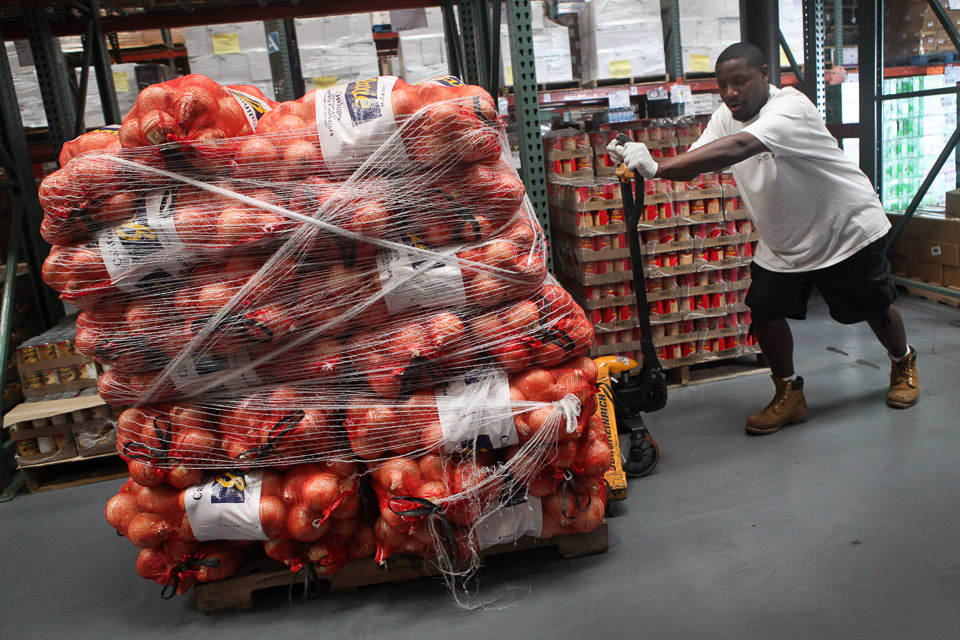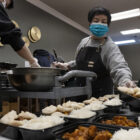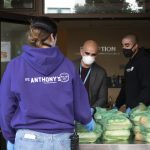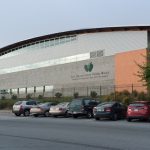Federal food aid cutbacks have forced the San Francisco and Marin Food Banks to seek more cash donations from the community after it failed to receive funds from the Emergency Food and Shelter Program for a second straight year.
Since 2010, the food bank has not received any funding from the Emergency Food and Shelter Program, which would have gone to purchasing more fresh produce. Its current food purchasing budget is $3.8 million, which represents a $161,000 reduction in aid from last year. Though the loss received a lot of publicity, the Food Bank does not rely heavily on federal funding, including the Federal Emergency Management Agency.
On average, less than 15 percent of the Food Bank’s funding comes from government sources. Most comes from individuals (nearly 60 percent), corporations (12 percent) and foundations (12 percent).
The Food Bank has worked for the past decade with food producers and providers to obtain a wide variety of fresh produce. It is working with farms in the Central Valley to get excess produce from growers and packers, said Blain Johnson, a Food Bank spokesman.
Through Farm to Family, a program run by the California Association of Food Banks, the San Francisco organization gets produce that is too small or too large for grocery store sale, and gets excess crop production for pennies a pound. Watermelons are about half the size of the store-bought variety, but no less tasty. This reduces food waste and provides hungry families with farm-fresh food.
The farm-direct supply is important because more than half of what the Food Bank distributes is fresh produce. It will distribute about 26 million pounds of fruits and vegetables to nonprofit partners this year, out of a total of 45 million pounds of food.
The organization is working to make up the $161,000 loss of potential federal funds with donations from individuals and corporations. The ability of the Fod Bank to obtain food from a variety of low-cost sources means every dollar donated translates into $6 worth of food, Johnson said.
“The Food Bank had just signed with three other growers out in the Central Valley,” said Paul Ash, the group’s executive director. “We think we can get oranges year-round. Before we used to get those seven months out of the year.”
Ash is also working on fresh milk. Although the Food Bank receives a substantial amount of dairy, the milk market is heavily regulated, making it difficult for farmers to offload any surplus even if they wanted to. “We’ve been working with food companies and regulators to try to make some exemptions when producers want to donate fresh milk and we were able to get a truck load donated this year,” Ash said.
Struggles with federal funding are not anticipated to have any impact on the upcoming holiday season,although there has been a shortage of turkeys for Thanksgiving.
The bulk of holiday provisions come from private donations from food manufacturers and suppliers. “These are private companies who are kind enough to donate their food products to the food bank and they are unrelated to the federal government,” Johnson said.
Karl Robillard, senior manager at St. Anthony Foundation, which provides food and shelter to those in need, said 50 percent of the organization’s daily meals and 95 percent of its produce comes from the food bank. But it relies on private donors for its holiday meals.
“If St. Anthony’s experienced a dramatic reduction from the food bank, we would have to scramble to find other ways to serve healthy and nutritious meals to 3,000 homeless and low-income San Franciscans,” Robillard said. “Of the seven items that comprise our daily lunch, more than three of the items come from the food bank.”
But St. Anthony’s has not seen a reduction in food or an increase in cost from the food bank.
St. Vincent de Paul’s Multi-Service Center, one of the largest homeless shelters in San Francisco, has utilized the food bank for many years and used FEMA for a short time, but was not dependent on it.
“The food bank is a great source, but St. Vincent already has funding for meals,” said Chris Cody, the organization’s executive director. “This is supplemented by donations from private funding. Our survivors of domestic violence shelters, the largest in the city, also have funding for food that is supplemented by private funding.”
Budgeting problems with the city and the federal government since 2008 have taught St. Vincent’s organizers not to rely on funds from agencies such as FEMA, but to diversify and widen their donation base.
“We receive very substantial food donations during the holidays,” Cody said. “These include food drives at schools, Catholic parishes, private companies and individuals. The food includes turkeys for the holidays and a great deal of canned and nonperishable foods that we distribute through our programs.”
Michael G. Pappas, executive director of the San Francisco Interfaith Council, said that after the recession hit and demand for food skyrocketed, the food bank asked the council to identify four congregations in heavily populated parts of the city to serve as emergency recession pantries.
The relief pantries provide three meals to 100 homeless people each night during the coldest months of the year. They were able to identify congregations, gather volunteers to staff pantries and help the food bank in its campaign to inform faith leaders and congregants.
For almost a quarter of a century the Interfaith Council has identified congregations as shelter sites and organized them to serve meals at the Interfaith Winter Shelter. Congregations that cannot afford to purchase food at grocery stores can get it at the food bank, and the council covers the cost. But some food comes directly from the members themselves. Each year at the annual Interfaith Thanksgiving Prayer Breakfast, organizers collect tons of canned goods in large collection barrels.
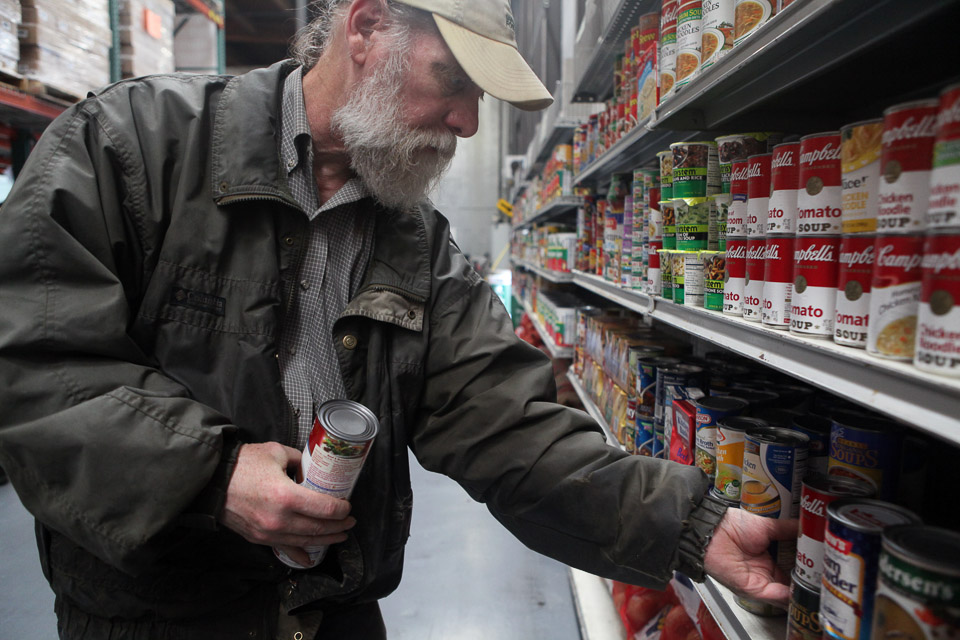
CORRECTION: An earlier version of this story suggested that the Farm to Family program was new and a response to the reduction in federal funding.
